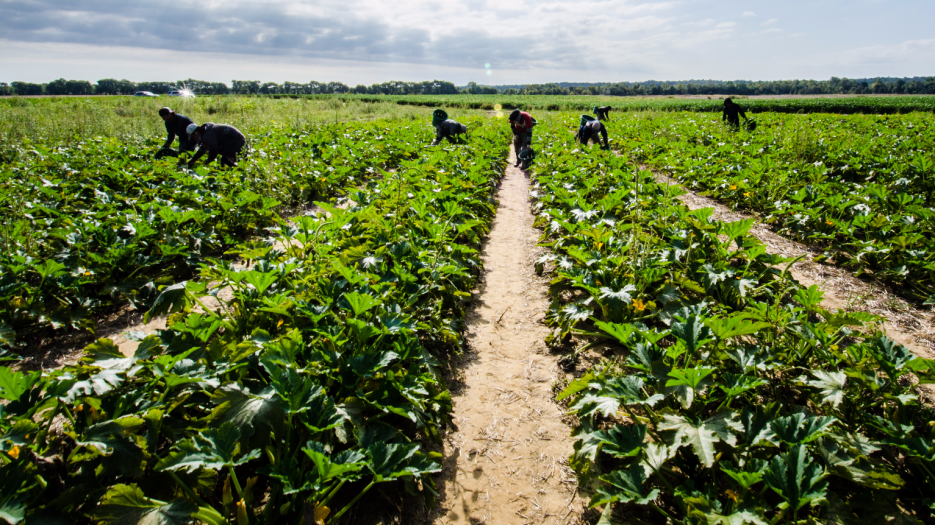

Apr 3, 2023Growers change plans to make up for labor shortage
The labor situation facing specialty crop growers in the U.S. can be illustrated with a single number: 371,619.
That’s the number of H-2A temporary visas certified by the federal government in fiscal year 2022, and according to Jason Resnick, the “meteoric” rise in field and orchard workers in the program tells the true story of how a shortage of laborers is affecting fruit and vegetable growers.
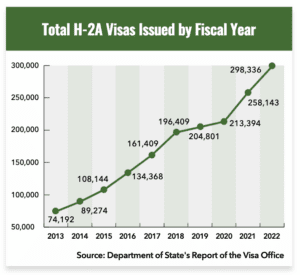

Resnick, the senior vice president and general counsel of Western Growers, said the sharp increase in H-2A requests that farmers filed and were granted by the Department of Labor — an increase of more than 300% in the last decade and a doubling over the last five years — shows the severity of an ag labor shortage in the U.S.
Florida leads in the number of H-2A workers, but California (and Washington) is leading the growth spurt, with an increase of 17% last year, Resnick said. Western Growers serves fresh produce growers in California, Arizona and Colorado.
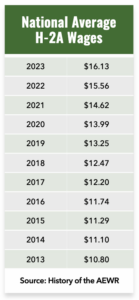

“The domestic workers that are here (in the U.S.), they don’t follow the crop, they’re not migratory. They typically followed the crop, but now they settle in communities and raise a family,” Resnick said. “And that domestic workforce is aging with an average age in the low- to mid-40s. The (average) H-2A worker is in their 20s.”
A recent online survey conducted by Vegetable Growers News received responses from throughout the U.S., with the majority of participants from California, New York, Michigan and Washington.
“The labor is here, but it comes at a steep price,” Resnick said, referring to the H-2A program.
Working harder, longer
Of the 222 survey participants, 43% said they had enough labor in 2022; 57% said they didn’t. As a consequence, 61% (of 122 respondents) had to leave fruits and vegetables in the orchards and fields.
Of 215 respondents, 35% said they use the H-2A program.
To compensate, growers responded in a variety of ways, according to survey participants:
- “Worked longer, harder and hired high school boys.”
- “We paid higher wages and raised our prices.”
- “Did some u-pick options and increased prices as much as the market would support.”
- “Just put up with it and hope next year is better.”
- “Hired additional unskilled part time laborers.”
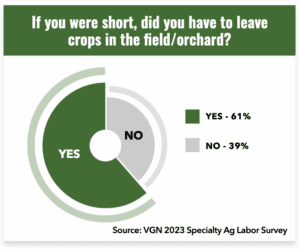

Resnick said California growers are responding to the labor shortage in a number of ways:
- Converting some crops to less labor-intensive crops, such as tree nuts like pistachios and almonds, which can be harvested mechanically;
- Using labor-saving technology, such as mechanical weeders and thinning machines, but that takes major investment;
- Changing cultivation practices, such as converting fields of strawberries to a raised bed system, which can speed harvest; and
- Hiring farm labor managers, which is becoming more popular;
- Growing less in the U.S. and importing more through partnerships in other countries, or establishing a farm in another country and exporting to the U.S.;
- Selling part or all of the farm to other growers, private equity investors, or developers, removing the acreage from production agriculture altogether.
Despite hopes that legislators would consider immigration reform before the Congressional session ended before Christmas, the House and Senate did not bring it up for a vote.
“We’re going to continue to make the case that the farm labor availability and affordability problem is not just a problem for agricultural employers but a problem for the whole country,” Resnick said. ” because if were not able to source labor that makes economic sense, farmers are not going to be able to grow crops that Americans expect to see in the produce aisles.”
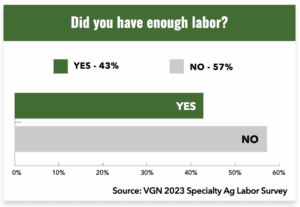

If growers and shippers are unable to secure labor, dependence on imported food grows, Resnick said, leading to a food security issue that could become a national security concern.
“It’s a serious issue and we believe members of Congress on both side of the aisle understand the issue, but anything having to do with immigration is considered the third rail of politics,” he said.
Mike Marsh, president and CEO of the National Council of Agricultural Employers, spoke at the Great Lakes Fruit, Vegetable & Farm Market EXPO in December in Grand Rapids, Mich.
“We’re pushing our food production to our foreign competition,” he said. “Today, over 60% of all of the fresh fruit consumed in the United States is produced somewhere else, and over 35% of the fresh vegetables. Those numbers grow every year.”
— Chris Koger, managing editor














